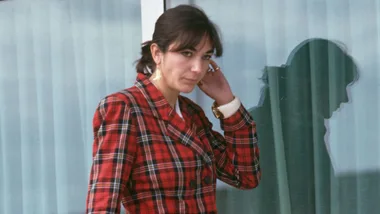There’s no question that elections can be intimidating. With all the press leading up to polling day it can be confusing to figure out who to vote for, and sometimes the ballot papers are less than clear. So. Many. Boxes! Now, with Gladys Berejiklian and Michael Daley going up against each other for the title of premier, NSW voters have a chance to have their say in the future of the state. So how does one make sure that their vote is heard? We’ve put together a go-to guide for voting in an Australian election, including which boxes to fill and which ones to leave blank. And, if you’re not sure of who to vote for, we’ve rounded up the major parties and their policies below.
How do I know if I’m enrolled to vote?
If you’re over the age of 18, are an Australian citizen and have enrolled to vote, then you need to vote in your local state and federal elections. You can find out if you’re enrolled here, and if you’re not, you can enroll here.
What happens on election day?
There are a few options for what happens on election day, depending on where you live. But for those who haven’t done an early vote (where you vote in the weeks leading up to the polling day) or aren’t voting online (you can check if you’re eligible here), election day can be quite fun! Often at a local community centre, like a school, voting starts by grabbing a Democracy Sausage (mandatory!) before heading in to get your name ticked off. After that, you’ll head into a booth where you can cast your vote.
How do I fill out the ballot?
THE SMALL SHEET (LOWER HOUSE!):
You’ll be given two sheets of paper, one will be for the Lower House, or the Legislative Assembly. This is the smaller sheet. This is where you elect your local member — you’ve probably seen the candidates’ faces around your suburb. For a federal election you must number every box, but for the NSW election, you are allowed to number just one box. However, numbering every box will give your vote more of a chance of being counted, as your preferences will likely come into play. Put a 1 next to the person you would like to see elected, and then 2,3,4 etc. for those you would most like to least like. Remember, at the May federal election, you WILL need to number every box for it to be counted — NSW is the exception.
THE BIG SHEET (UPPER HOUSE):
For the larger sheet (it’s massive!), you will be deciding on who gets elected to the Legislative Council, or the Upper House — the Senate. You have two options for this one: you can number just the boxes above the line or you can choose to number at least 15 below the line, where there are hundreds of boxes. So, what’s the difference?
Voting ‘above the line’ means you’re fine with the order that the parties have put their Senate preferences. In other words, you don’t mind which candidate gets in, so long as they are from your preferred party.
Voting ‘below the line’ means you want to choose exactly which members of the Senate are elected and for which party. This is quite confusing and often requires a deeper knowledge of individual candidates. We’d recommend reading this article by ABC analyst Antony Green if you’re planning on voting below the line.
If you want to support a certain party but aren’t sure what to number every box, find a volunteer from that party outside the polling booth and ask them for a ‘How To Vote’ card. This card will have the preferred order of boxes that will be advantageous to your chosen party.
See this guide from the Australian Electoral Commission for a visual on each ballot paper.
What will make my vote invalid?
Firstly, don’t draw or deface the ballot. If your ballot is ruined, it’s not going to be counted. Same for if you put random numbers or don’t number all the preferences (above the line) for the Senate selection. If you really care about making a difference, ensure your ballot is filled out correctly and you’ve researched the parties who will represent your views best.
Who should I vote for?
This is the big question! Voting is individual, and you should vote for whoever represents your views best. Not sure who that might be? We’ve broken down the major parties and their key focuses below to give you an idea. Remember, you don’t have to vote for who your parents, friends or loved ones vote for. Your vote is anonymous and you should vote for who you think will best serve your community over the next four years.
The NSW Liberal Party (the current party in power)
Key focuses: Infrastructure projects like WestConnex and the Light Rail in Sydney, regulating entertainment in NSW (including heightened police presence at music festivals and concerts), re-building Allianz Stadium at Moore Park in Sydney.
The NSW Labor Party
Key focuses: Free TAFE, inject more money into hospitals, providing 500,000 solar panels to homes, stop the construction of new Allianz Stadium at Moore Park in Sydney.
The NSW Greens
Key focuses: $1 Opal fares, transitioning to 100% renewables by 2030, 100% of NSW education budget going to public schools.
One Nation
Key focuses: Cut immigration, preserve “traditional Australian values and lifestyle (such as recreational fishing)”, build new hospital in Western Sydney.
Shooters and Fishers
Key focuses: Protection for farmers against “activists”, strengthen property ownership laws, relax gun laws.
Keep Sydney Open
Key focuses: End lockout laws, introduce pill testing at music festivals.
Happy voting!










